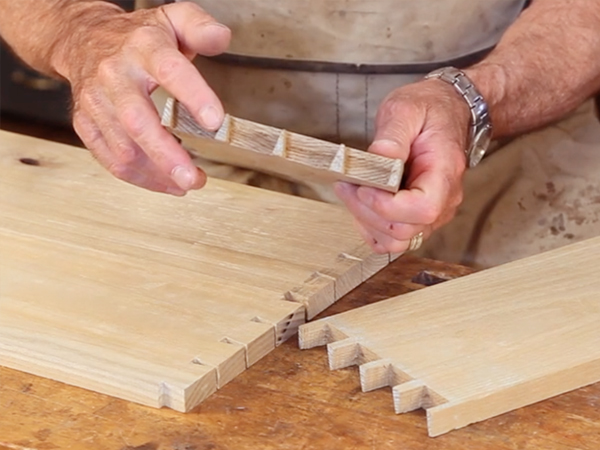
This is the final episode of the Hand Cutting Dovetails series. Ernie wraps up his series about dovetail joinery with several additional tips and thoughts, such as: Do you cut pins first or tails first? Why doesn’t he use a fret saw to remove waste more quickly? And, how he uses a router to clean up pins and tails.
The dovetail may be the most iconic joint in woodworking. It is the perfect marriage of form and function – both strong and attractive. In this series, Ernie Conover clearly demonstrates how to lay out, cut, and assemble the most popular types of dovetail joints.
Watch: Making Dovetail Joints – Conclusion
Watch more videos from the Hand Cutting Dovetails Series:
Hand-Cut Dovetail Series Episode Listing:
1. Introduction: Why hand cut dovetails? A brief history of the joint.
4. Through Dovetails – Making the Pins – Sawing
5. Through Dovetails – Making the Pins – Chiseling the Waste
6. Through Dovetails – Transferring the Layout
7. Through Dovetails – Sawing the Tail Boards
8. Through Dovetails – Trial Fit, Gluing, and Clamping
9. Through Dovetails – Modifying Pin Widths and Layouts for Box Lids and Drawers
10. Half-Blind Dovetails – Overview
11. Half-Blind Dovetails – Layout Pins
12. Half-Blind Dovetails – Sawing and Chiseling the Pins
13. Half-Blind Dovetails – Transferring the Pin Layout to the Tail Boards
14. Half-Blind Dovetails – Gluing and Clamping
15. Full-Blind (Secret) Dovetails
17. Conclusion – Additional Tips and Methods





